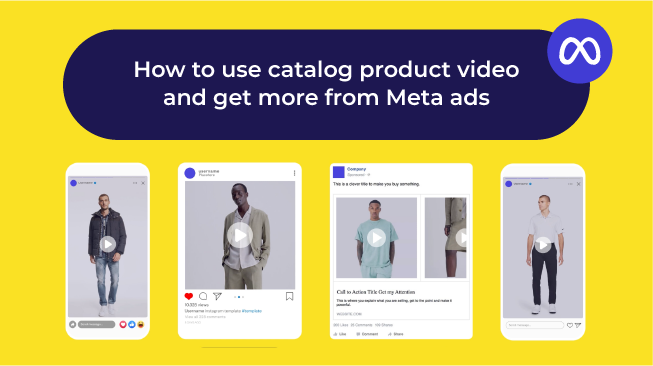There are different types of e-commerce data, and although all of them are important, product performance data is both undervalued and highly underused by e-commerce marketers. To effectively analyse and act on product performance data, companies need a Product Performance Management (PPM) platform.
This article will give you an overview of e-commerce data, offer insight on how you can use product performance data to improve your business, and introduce the PPM platform.
What are the different sources of e-commerce data?
While there are numerous types of e-commerce data sources, there are four primary sources that you should be paying attention to.
Customer data
The first e-commerce data source is customer or consumer data. This refers to the behavioural, personal, and demographic information about customers. The goal of gathering customer data is to improve the customer experience, understand customers’ behaviour and buying decisions, and to maximise your e-commerce profits.
Customer data is also essential for customer segmentation. Customer segmentation, or market segmentation, is the division of potential customers into different groups based on customers’ demographics, needs, and buying characteristics, in order to better optimise your ads.
Campaign data
The second e-commerce data source is campaign data. Campaign data is simply the information you’re able to see about the campaigns you’re running in platforms such as Google Ads, Meta, and Google Analytics. Examples of campaign data include impressions, ad spend, ROAS (return on ad spend), and CTR (click-through rate).
PIM (product information management) data
The next essential type is PIM (product information management) data, which is the process of organising and maintaining your product information across your selling platforms. It generally includes all product content and digital assets, such as videos, images, product categorisation, personalisation renderings, and more.
PIM data includes, but isn’t limited to:
Product identifiers - This data covers SKUs (stock keeping units), UPCs (universal product codes), GTINs (global trade item numbers), and article numbers, as well as product titles, names, and other miscellaneous information.
Technical specifications - This involves technical attributes such as size, colour, fabric, material, and other technical aspects. It can also include information about warranties, weight, measurements, and dimensions.
Usage information - This simply describes when, where, and how your product should be used.
Sales information - This encapsulates pricing information, testimonials, and customer reviews, which can then be used during the sales process or promoted on your website.
As your business expands, so does the sum of product descriptions, labels, prices, and so on. To maintain and enrich your product information data, we recommend looking into a PIM (product information management) system.
Product performance data
The final core source of e-commerce data is product performance data, and it’s highly underused.
Product performance data helps you understand the performance of each product through metrics like number of transactions, revenue, and margin, so you can determine the best products to focus your budget on for each campaign, enabling you to increase profitability.
While most e-commerce retailers understand the importance of customer data, and the majority of sellers already have the tools to analyse campaign data or find PIM data, product performance data remains undervalued and unseen across departments.
As retail marketers continue their search for more data (56% are still struggling to measure the success of their campaigns), product performance data is increasingly continuing to prove its value.
How to gather and use product performance data
Here are a few examples of how product data can improve your business:
Product data can align departments
One of the biggest problems e-commerce retailers face is that company data is siloed, meaning different teams don’t have access to the same information. In fact, 55% of retailers struggle to share and access data between departments.
For example: the marketing team doesn't know the purchase price of each product, and the commercial team doesn’t know the ad spend of each sale. This makes it difficult for departments to harmonise.
With a connected source of product performance data from across departments, your marketing, merchandising, finance, and purchasing teams can see and use the same data to focus on their own areas of expertise.
Product performance data can enhance your dynamic ads
It’s likely that 80% of your ad budget is spent on just 5% of your catalogue. Beyond that, you don’t have control over which 5% of the catalogue that is.
Why is this happening? While Meta and Google do care about their advertisers’ goals (e.g. profitability), they also have their own goals, like offering users a great experience.
The more data Meta and Google have about each product, the better equipped they are to predict user experience, which benefits them. This means the more they promote one product, the more data they have on it, leading them to continue to promote that one product and leave your other items, such as new arrivals, out.
This is a textbook case of the Principal Agent Problem. The agent (Meta and Google) makes decisions on behalf of the principal (you). Conflict occurs if one decision is best for the principal, but a different decision is best for the agent. The platforms have to favour user experience, because they need to have users to have advertisers, but unfortunately, it doesn’t work the other way around.
To enhance these platforms’ algorithms, you can use product performance data to create separate product groups/sets with their own bids and budgets, based around your specific goals. The advertising algorithms will pick from the selected groups rather than from the entire catalogue, ensuring that all of the products you want promoted get promoted.
Product Data can improve Meta's algorithm for Discovery Commerce
This goes hand in hand with enhancing your dynamic ads through product performance data. Meta Discovery Commerce is an online sales system that places the customer in an “always-shopping” mode. It’s powered by AI and machine learning that connects people with the perfect products based on their online behaviour, before the customer starts searching for them.
If you’re already capitalising on Meta Discovery Commerce, the product performance data can take your business to the next level by providing insight into which products you should promote, which products you should stop promoting, and what your most popular channel for each product is.
How to gather and use product performance data
Your product performance data exists; the trouble is gathering all of it and stitching it together to make something usable.
Promote bestsellers with product performance data
Let’s say you want to run a scaling campaign to increase your revenue. Great, you can make a campaign around your highest revenue products, and your product performance data can help you find which products are a fit.
- Go to Google Analytics to find your products that have brought in the highest revenue (top 10 - 20%)
- Find the top 10 - 20% from Meta
- Combine these into one list and remove any duplicates
- Create a new catalogue (for Meta) / group (for Google) of these products
- Run a campaign around these products rather than a site-wide campaign; this will ensure that the ad networks promote only the products that match your goal of scaling with high revenue producers
This is a manual way to put your product performance data into action, but it will require someone (or several someones) with the time and knowledge to put it together. Beyond that, you will be promoting a new catalogue each time you try a solution like this, which means you won’t be able to gather any learnings about your products
Keep in mind, your highest revenue products on Monday may not still be your highest revenue products on Tuesday, so you’ll want to update this list of products at least 1-2 times a day and ensure the changes are reflected in your campaigns.
Avoid wasting budget with product performance data
Another example of how you can use your product performance data is to identify where you’re wasting budget. Revenue is great, but profit is what really matters. What was the margin on those products? How often were they returned?
You can use your product performance data to check if your top selling products are actually profitable.
- Go to Google Analytics to find your products that have brought in the highest revenue (top 10-20%)
- Find the top 10-20% from Meta
- Combine these into one list and remove any duplicates
- Speak with your finance department to find the margin behind these products
- Talk with your category managers to get the return rates for these products over the past 60 days
- Remove the revenue counted from returns in order to find the true profit of each item
With all of this data together, you can assess if your budget is being spent on the products that actually improve your bottom line, or being frittered away.
Again, to keep this data relevant it will need to be updated 1-2 times a day.
While the strategies above are possible to use for a trial, or with a small catalogue, they require time and analytical expertise. In order to scale the benefits of product performance data, you can’t rely on manually putting product lists together.
ROI Hunter’s PPM (product performance management) platform enables e-commerce retailers to gather product performance data from across their channels and departments, and communicate it to the ad networks in real-time.
This performance data is updated automatically based on conditions you set, ensuring that your marketing strategy is always up-to-date without needing to employ an army of data scientists.
You can filter your catalogue to find your highest revenue products from across all channels with a click. You can input margin and return data to ensure that your budget is spent on the right products. Finally, you don’t need to waste time updating anything manually, and you preserve the catalogue learnings when you create new product sets.
With all of your product performance data visible in one place, it becomes easier to align to departments across your business:
- Marketing can focus more budget toward their good products and away from their bad ones
- Merchandising can determine the right products to discount by considering how much promotion a product has had
- Purchasing can decide which products should be repurchased and which items shouldn’t based on product-level profitability, including true marketing spend
PPM in practice
Below are some examples of how major brands have successfully used the PPM platform to reach different business goals:
- Promote collaboration and see cross-channel data through a single source: FUNKO used the PPM platform to gather all of their data in one place so that their entire company, along with their media agency partner, Space & Time, could have access to the same information. With their cross-channel data in one place, FUNKO could see all of their Google data side-by-side and on a product level, which enabled them to discover patterns in their product performance that they wouldn’t have been able to find anywhere else, leading them to a 105% increase in conversion rate.
- Scale revenue: EQVVS wanted to make their campaigns more effective. Using the PPM platform, EQVVS was able to filter their catalogue for any metric they wanted to create highly specific product sets optimised for their goals. They chose to create a product set made up of their bestsellers, a decision that led their campaign to a 20% increase in ROAS (return on ad spend) in just two months.
- Improve budget efficiency: Fashion Days used the ROI Hunter to analyse how much they were wasting on advertising their poor-performers. They then created a new product set to exclude poor-performers from promotion on Facebook, resulting in a 47% jump in ROAS.
You can see more PPM platform success stories here.
Final Thoughts
Though all data sources are important for retailers, it’s time to start viewing product performance data as core data, rather than an accessory to the types you’re already using.
With a PPM (product performance management) platform, you’ll gain invaluable actionable insight into your product performance, enabling you to align your departments, enhance your dynamic ads, improve your success with Meta Discovery Commerce, and more.
Learn more about how to use product performance data here.


.png)
